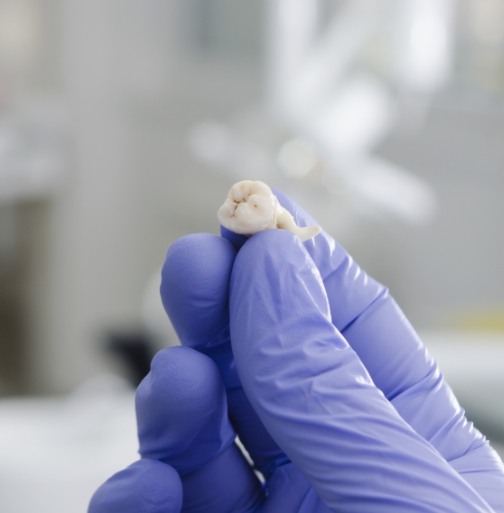Tooth Extractions – Newington, CT
We Can Gently Remove
Your Compromised Teeth
Tooth extraction is a dental process in which your dentist will completely remove one or more adult teeth. A tooth may require removal if there is tooth overcrowding, if there is an infection, if a tooth is broken, or if there is any form of extreme trauma to the tooth that cannot be effectively treated with other dental procedures. A wisdom tooth that does not have enough room to grow in may also require a tooth extraction. After tooth extraction, you can expect one to two weeks of recovery time. Because teeth may begin to shift over time, your dentist may also recommend a tooth implant, dentures, or bridges to fill in the space of the extracted tooth.
Why Choose Cedar Mountain Dental for Tooth Extractions?
- In-House Dental Implant Placement
- Dental Sedation Options Available
- Open Nights and Weekends
When would I need a tooth extraction?

A tooth extraction of adult teeth is usually recommended where other treatment options would be ineffective or where there is a dental emergency. Reasons for a tooth extraction may include:
- Extreme trauma to the tooth
- Severe dental decay
- Other major damage sustained by the tooth
- Tooth overcrowding
- Gum disease
What happens during tooth extraction?

Before beginning a dental extraction procedure, your dentist will administer local anesthetics to numb the site of surgery and minimize pain. Sedation dentistry may also be recommended to help relax you and put you to sleep during the procedure. Once you are relaxed and comfortable your dentist will begin the procedure by gently removing any gum or bone tissue surrounding the tooth. Your dentist will then carefully wiggle the tooth around until it breaks free from the jaw and surrounding structures. In some cases, your dentist may need to remove the affected tooth in sections.
After the tooth is completely removed, your dentist will gently pack and apply gauze to the empty tooth socket to help control any bleeding. Your dentist may also close the site of surgery with stitches and place gauze in the tooth socket. You should maintain a good bite on the gauze to control bleeding and encourage clot formation. Do not allow the gauze to become soaked with blood, and remove the gauze if it does. When bleeding is controlled, the gauze can be removed three to four hours after the procedure is complete.
Recovery after a tooth extraction

During the firsts few days after a tooth extraction, your dentist will recommend you eat soft foods only, slowly switching back to solid foods as the treated area heals. Total recovery time can take a few days to a few weeks. To help promote healing time your dentist may also recommend the following tooth extraction aftercare:
- Apply a cold ice compress to the site of surgery for 10-minute increments
- Avoid activities for the first few days following your procedure
- Rest for a minimum of 24 hours after surgery
- Rinse your mouth with a salt solution 24 hours after the extraction
- Prop your head up whenever you lay down to help control bleeding
- Brush and floss on a regular schedule but avoiding the site of surgery
- Not rinsing or spitting for the first 24 hours after surgery to prevent loosening of the clot
- Not drinking from a straw for the first 24 hours following the extraction
What are the benefits of tooth extraction?

A tooth extraction can provide many dental benefits including:
- Removal of severely damaged tooth/teeth
- Saving surrounding teeth from potential spread of infection
- Creating space for surrounding teeth or for orthodontic devices

